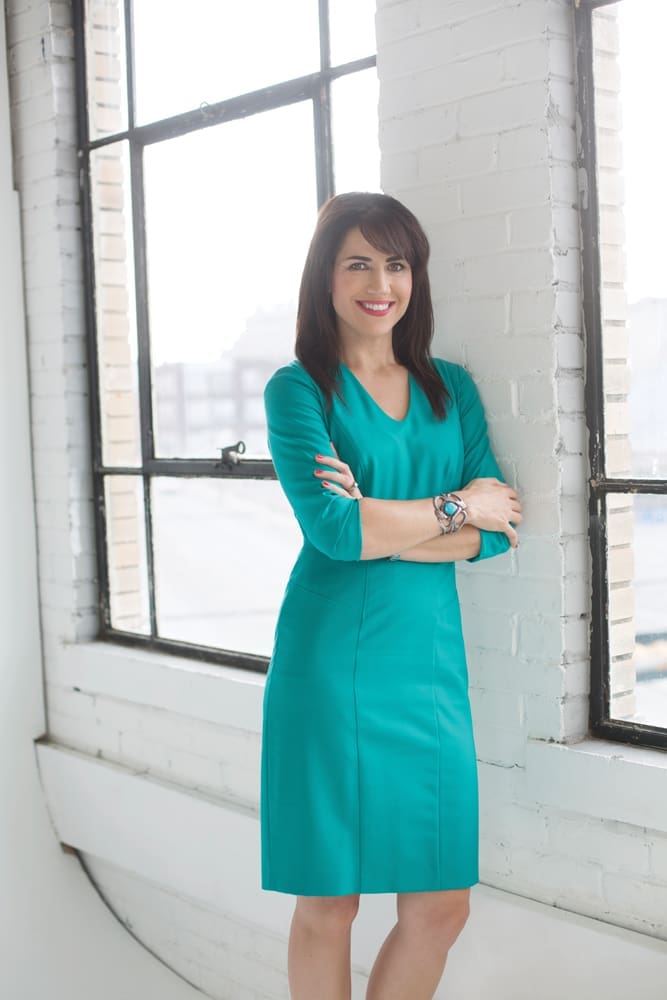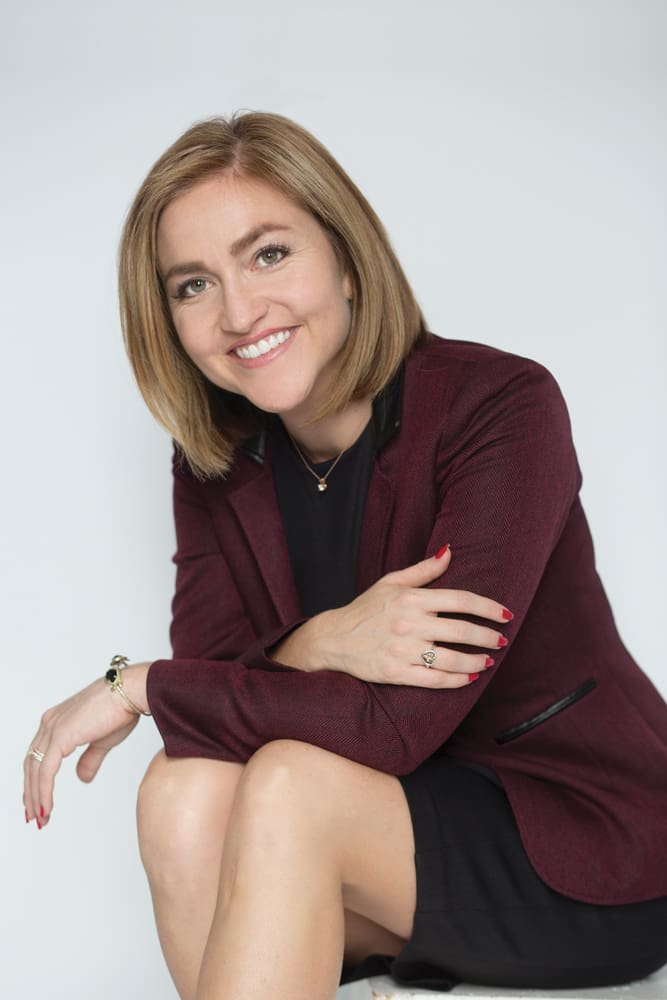San Antonio has made huge strides in recent years to improve and enrich the lives of citizens and visitors. From very visible physical improvements to the diversification of the economy and the expansion of educational opportunities, the momentum has been created showing that we as a community are determined to invest in our future. The three women featured in this article are on the forefront of that change, working with dedication and enthusiasm to build a stronger city.
Lori Houston

When Lori Houston first visited San Antonio, she was impressed by the city’s size. Only 22 at the time, she had spent most of her life in smaller towns, such as Enterprise, Ala., where she grew up, and Las Cruces, N.M., where she attended college. “San Antonio was huge to me and very exciting, but it also had a small town feel to it. I felt welcome,” she says.
Today, Houston can honestly say that she has made a real contribution toward making her adopted city even more exciting and welcoming. As the first employee, and later director, of the Center City Development & Operations Department for the City of San Antonio, she was involved in some of the most significant and high-profile projects in recent years, such as the Museum Reach segment of the River Walk expansion, the redevelopment of Travis Park, the downtown housing boom and the transformation of both the Pearl Brewery complex and the Hemisfair Park. Since her promotion to assistant city manager in July 2015, she continues to oversee her former department, as well as arts and culture, the library system, the World Heritage site and the Alamo master plan. Exciting indeed! And a huge responsibility.
“I have always felt that I wanted to be in public service,” explains Houston, who has been with the city since 2002. “My heart is in it. My dad was in the military, and it was embedded in us that we were expected to do work for the community. I feel connected to my work, and it’s satisfying to be able to make a difference.”
Her City Hall career started with an internship but rapidly progressed to more and more demanding positions. The big break came when City Manager Sheryl Sculley gave her “the incredible opportunity” to work on the Museum Reach expansion as the city’s project manager when she was only 27. In this capacity, she worked closely with the San Antonio River Authority, the county and the U.S. Army Corps of Engineers to complete the $72 million project on time and under budget. “We wanted to finish the job before (former mayor) Phil
Hardberger left office. I worked with engineers and architects, as well as developers who wanted to develop properties along the banks to make sure that development was compatible with the plan. For two years, I worked from the office but also was out there in boots and a hard hat.”
Hardberger’s term expired one day after the completion of the work. “It was extremely satisfying to see it all done,” she acknowledges. “I could actually see how it changed the community.” The process also gave her valuable managerial experience, and for that she is grateful to Sculley. “I had a woman CEO (Sculley) who allowed me to make important decisions and lead. It was an empowering experience.”
But she is no less proud of facilitating general downtown revitalization, especially in regard to housing, which is on track to reach the goal of 7,500 new housing units by 2020. “I developed a passion for downtown,” she states sincerely. “Great cities have great downtowns.” Her efforts have not gone unnoticed. Centro San Antonio, led by her former boss, Pat DiGiovanni, named her Downtowner of the Year in 2014.
But now there are new challenges, such as the Alamo Plaza. The city has been working on that for a number of years, she explains, but now the strong partnership between the state’s General Land Office, the City of San Antonio and the private Alamo Endowment has made the project a reality. Houston wants everyone to know that there is no actual design yet. In fact, the next step is to hire an “interpretive planner” to work with architects on the actual design. And she promises more opportunities for citizen involvement.
“I am extremely humbled to be working on this,” she says. “The Alamo is part of the UNESCO World Heritage Site, and we have now this great opportunity to tell the world why San Antonio is so special.”
Dedicated as she is to San Antonio, like many mothers, Houston strives to create balance between work and family life. Weekends are strictly for family. On Saturday mornings, she takes Millie out in her stroller for a mother-daughter outing through Brackenridge Park, refreshments at the Pearl, a visit to Mi Tierra Bakery and play time at the Yanaguana Garden. “I love that experience. I love being a mom and raising a San Antonian,” she says.
Molly Cox

Molly Cox’s community engagement started very early. “I did community theater since the age of 5. At that age, you don’t even know that you’re involved in the community, but I was, in fact, a community volunteer,” says Cox, who is now the president and CEO of SA2020, the nonprofit that grew out of an initiative to gather and define goals for the future of San Antonio. The effort was initiated by then-mayor Julian Castro, and thousands responded to his call by sharing their thoughts on what was important to them.
Cox, who moved to San Antonio from her native Corpus Christi in 2006 to get her master’s in political science from UTSA, was drawn to the idea. A seasoned volunteer by that time, she saw it as an opportunity for people to connect with one another to work toward a goal. “The ability of human beings to come together to tackle societal challenges is at the heart of nonprofit organizations, which I came to see as beacons of community change” she observes.
Post-degree, Cox worked at UTSA as the director of the school’s Center for Policy Studies, where she ran nonprofit management programs for students and professionals. It was in that capacity that she developed a working relationship with the mayor’s office that led to an invitation to serve as a table facilitator for some of the SA2020 “public envisioning” meetings. By March 2011, the report from all the meetings and online input was compiled, showing 11 areas where the citizens wanted to see improvement, including public safety, downtown development, economic competitiveness, education, health and transportation.
Cox had just opened her own consulting business when Castro hired her to work on “community engagement,” this time with the goal of turning the vision into reality. The first move in that direction was to launch three educational initiatives and recruit community partners to run them, which is how SA2020 operates to this day. It now has more than 145 partners, from health and children’s services organizations to museums and theaters. It is those partners who carry out the work necessary to improve the myriad parameters in each of the 11 categories. Cox became SA2020’s CEO after the first president, Darryl Byrd, left in 2015.
With only a handful of employees, the role of SA2020 is to report, engage and inform, says the CEO. It’s a “catalyst for progress” on the community vision. “We’ve been called San Antonio cheerleaders,” she adds. That progress is measured by following dozens of parameters, such as downtown housing, teen births, obesity, crime rate, use of public transportation and many more.
“It’s working. Forty-two percent of the 59 indicators followed are either on track or have exceeded expectations,” notes Cox. Some, like improving water conservation or reducing police response time, were easy to fix. But positive trends have been recorded in many others, such as high school graduation rates, fitness amenities, access to health care, arts venues, employment in “target industries,” etc. Unfortunately, the obesity and diabetes rates are “flat or getting worse,” and not much has moved forward in transportation and infrastructure. (The 2016 data was not yet available.)
“The teen pregnancy rate is something I like to talk about (in public presentations). It has gone down substantially,” observes Cox, her voice slightly rising. “It’s a highlight for SA2020 because it proves our theory, and our theory is that if people work together toward common goals, positive change occurs. So leave your political beliefs and your agenda at the door, come inside, and let’s talk about how we can reach a goal together.” The remarkable decline of 26 percent over only two years was accomplished through a joined effort of a number of both secular and religious entities. Cox is also hoping that initiatives being put into place now will show results in the future, especially in educational achievements, which take time.
Cox, who still spends some of her free time working in the theater – she will direct two plays this fall – attributes at least part of her success to her stage experience. “Theater makes you a better listener and a better storyteller. It teaches you to respond quickly and to work cooperatively; it teaches you to improvise if necessary – all good things for this job,” she explains. And she still does a lot of volunteer work and invites others to do the same. “It’s easy to find an organization (on SA2020’s website) whose work appeals to you, so volunteer and give them your dollars.”
Jenna Saucedo-Herrera

As a VP of public affairs and brand management at CPS Energy, Jenna Saucedo-Herrera was also a board member of the San Antonio Economic Development Foundation (SAEDF) and sat on the search committee looking for a new CEO for the agency. While the search process was still underway, however, the organization’s chair, Wayne Peacock, asked her to switch roles and throw her name in the hat for the top job. So she did.
“It wasn’t an easy decision. I had an incredible job at CPS Energy and a great team,” says Saucedo-Herrera, who was only 29 at the time. “But this job offered a unique opportunity to make a difference. As hokey as that sounds, I am driven by a wish to provide value. When I thought about this opportunity and the trajectory of the San Antonio economy, the chance to be in the driver’s seat and directly impact the future of the community was very appealing to me… the San Antonio community is at the pivotal moment when we are finding a balance between how we celebrate our rich history, legacy and culture while also preparing for new opportunities. SAEDF is quarterbacking a lot of that.”
For decades, the main role of SAEDF was to attract new businesses to San Antonio, but about five years ago the agency revised its mission to include helping existing local companies expand and improve their operations. Since she took the helm a little over a year ago, Saucedo-Herrera has enlarged the vision further by adding international recruiting and workforce development. Long-term, SAEDF hopes its efforts will impact economic indicators such as median household income, GDP and capital investments, which influence the “vibrancy of the community.”
To accomplish this ambitious agenda, the CEO and her team have to do a great deal of marketing, traveling and nurturing bonds with various companies, though some leads come to them through state agencies. In the weeks prior to our interview, Saucedo-Herrera traveled to Spain and Japan to “tell the San Antonio story” and extol the benefits of locating a business here, such as low cost-of-doing-business, climate, central geographical location and a skilled workforce. While all business investments are welcome and helped, the focus is on certain target industries that are already pretty strong here – IT/cybersecurity, biosciences, new energy, financial services and advanced manufacturing. And local enterprises are courted as well, often with the help of city and county officials. “About 70 to 80 percent of jobs across the U.S. are created by existing companies,” points out the energetic CEO.
Recent SAEDF successes include Hulu’s “viewer experience” headquarters, which will employ 500 San Antonians, and the large distribution and manufacturing center that TJX (parent company of TJ Maxx and other brands) is building on the South Side, bringing 1,000 new jobs to the area and benefiting the neighborhood in additional ways. A good example of retention success is the deal negotiated with Capture RX, a San Antonio-based health care IT company that wanted to leave but has decided to stay and move downtown, adding 200 employees to its workforce. Altogether, the recent developments created 2,583 new jobs in the city. Not surprisingly, she sees the workforce development and the economic expansion strategy as closely related. A program of SAEDF called SA Works offers experiential learning opportunities for young people in the form of internships, career fairs and job shadow days to prepare them for the job market.
An Elmendorf native, Saucedo-Herrera grew up on her family’s working ranch and attended Catholic schools, including St. Mary’s University, where she majored in marketing. Her only previous employer was CPS Energy, where she quickly ascended through the ranks to a VP position. “I am humbled and proud to have had this tremendous career in recent years,” she says. “I was taught early on to do everything 110 percent, with pride and passion. That’s what I have done, and opportunities presented themselves, many in the form of challenges. I like challenges and thrive on ambiguity. In ambiguity, there is space for innovation and creativity.”
One area where her creativity may come in handy is in formulating an easy-to-absorb brand identity for San Antonio, along the lines of Austin’s high-tech identity and Houston’s image as the energy capital of the country. “We need to articulate what we are and to become that community of preference for young professionals seeking a place to live and work,” she says emphatically. Branding talks are in progress with other interested entities in town.
While her life is as busy as they come, there is room for love and fun. In 2016, she tied the knot with former CPS Energy colleague Adrian Herrera in New Orleans. They have no children yet, but she happily mentions three godchildren that the couple like to babysit. “Our pride and joy — plural,” she says. For recreation, the two go fishing, boating or hunting. Of the two buck heads mounted on the wall in their home, hers is bigger, she tells us, laughing.
Like Lori Houston’s, Saucedo-Herrera’s love of and commitment to San Antonio are obvious. So how does she see the city’s future, say, in 10 years?
“It will be incredibly different, even physically, with Hemisfair completed, the San Pedro Creek project, the new Frost Tower downtown… There’s tremendous momentum and energy here right now, not just downtown but across the board. There will be growth and change in many areas — the Medical Center, Brooks City-Base, the I-10-35 corridor. San Antonio is going to step into its shoes as the seventh largest city in the U.S.”
By Jasmina Wellinghoff
Photography by Lexi Murzea
The post Leading Us Into the Future appeared first on San Antonio Woman Magazine.



